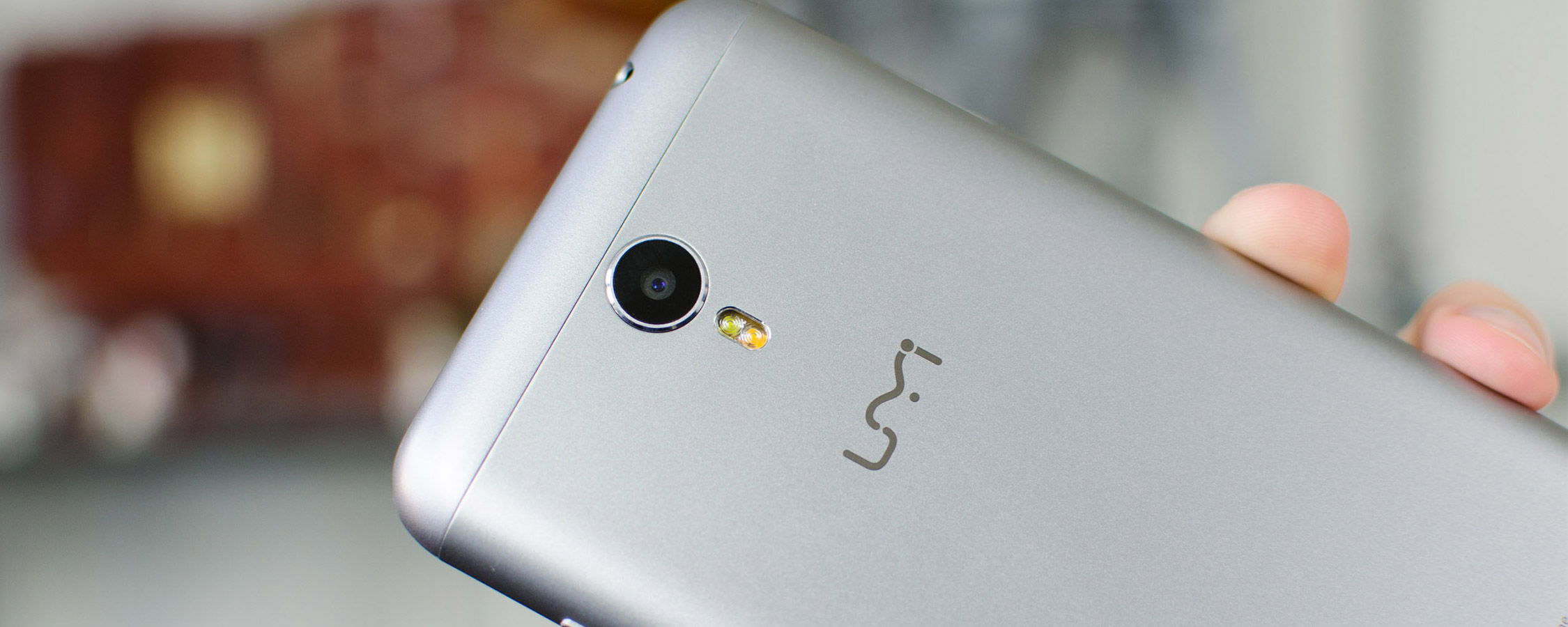Display
The Umi Touch is listed as coming with a 5.5-inch "LTPS 2.5D Arc screen" with a resolution of 1920 x 1080. Umi hasn't specified the exact type of technology used (LTPS, or low-temperature polycrystalline silicon, is a type of TFT design), but it's clearly an LTPS-TFT IPS-type LCD with a pixel density of 441 PPI.
On paper this is a really compelling display, because you don't often see 1080p resolutions at this price point. The resolution is certainly fantastic, providing sharp imagery and text, and I was pleasantly surprised by the excellent viewing angles exhibited by this display. These two aspects to displays are often compromised in budget devices, but not here.
The Umi Touch's display packs average brightness and black levels, which result in a contrast ratio just above 1000:1, which is what I'd expect from a budget handset. The 2015 Moto G's display can go a bit brighter than the Touch, but the thin glass panel and great viewing angles still makes this device viewable outdoors.
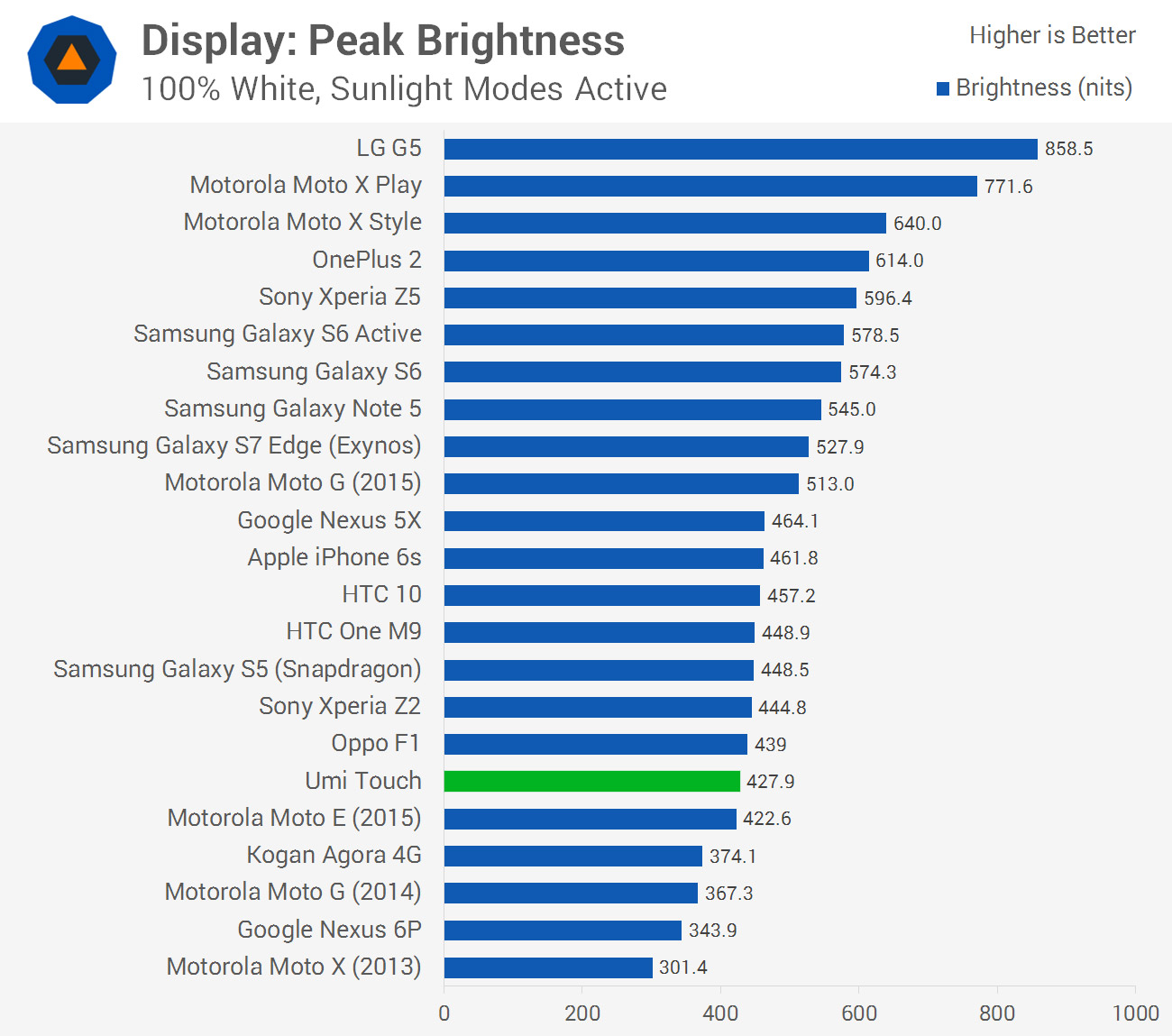
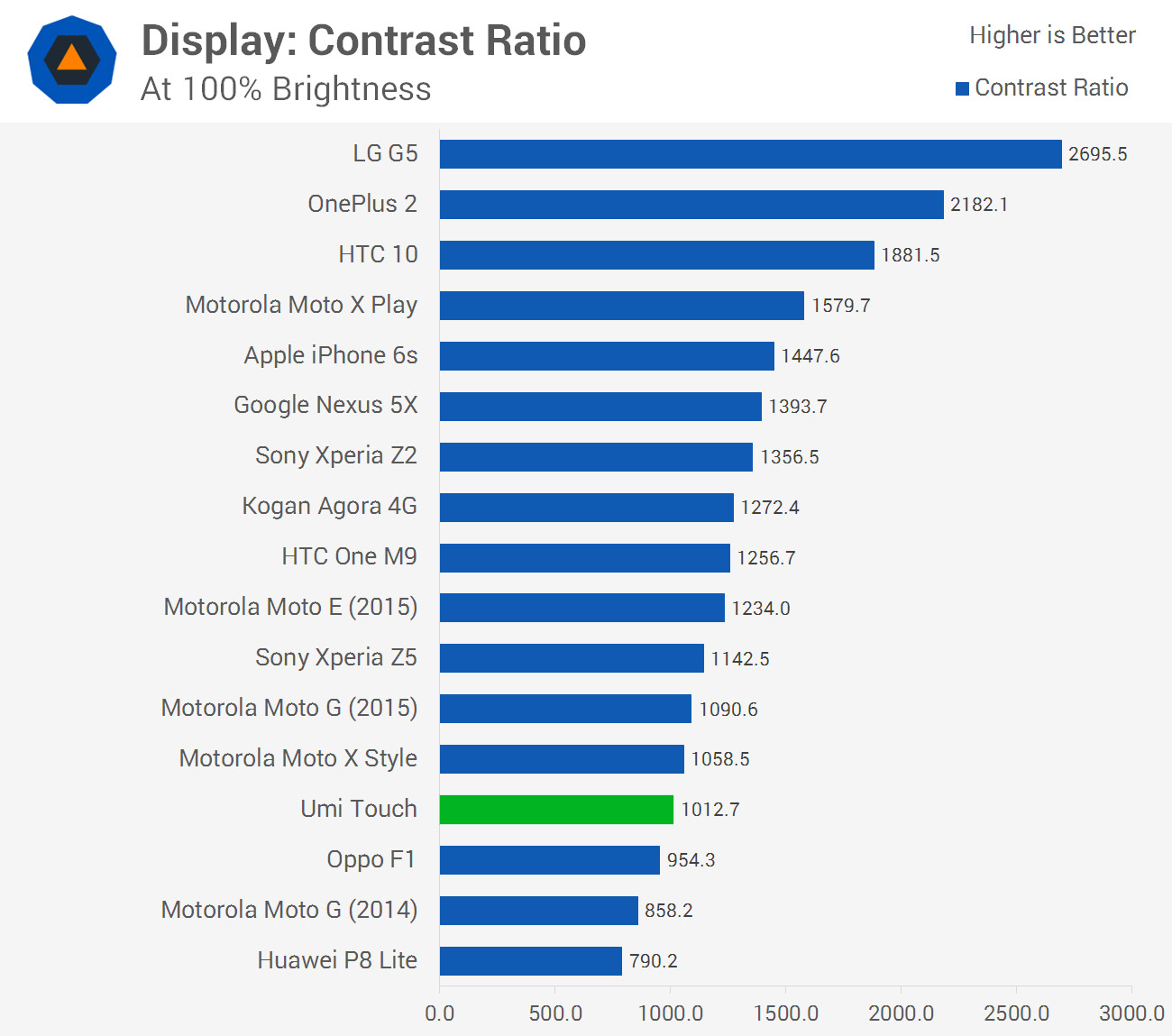
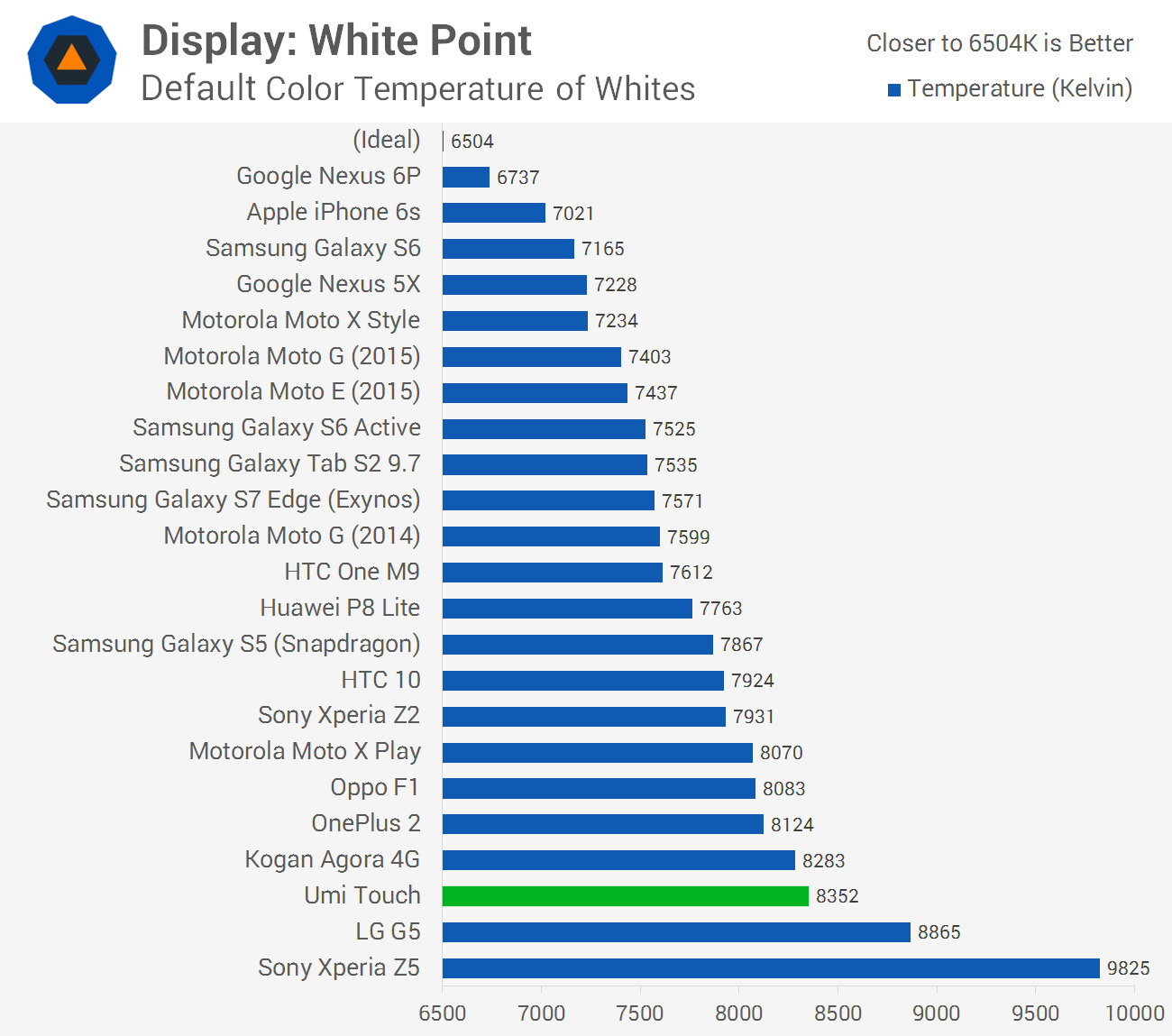
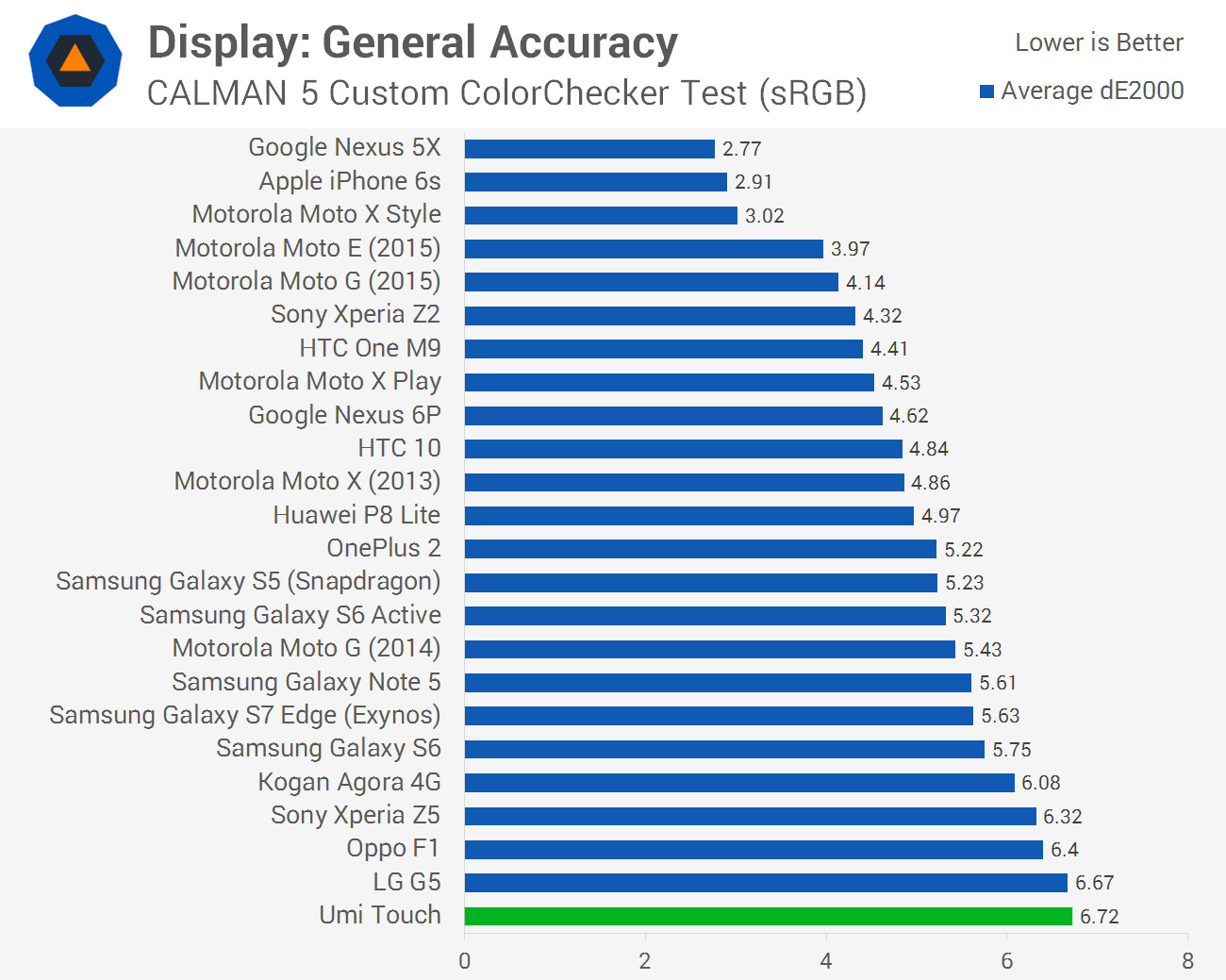
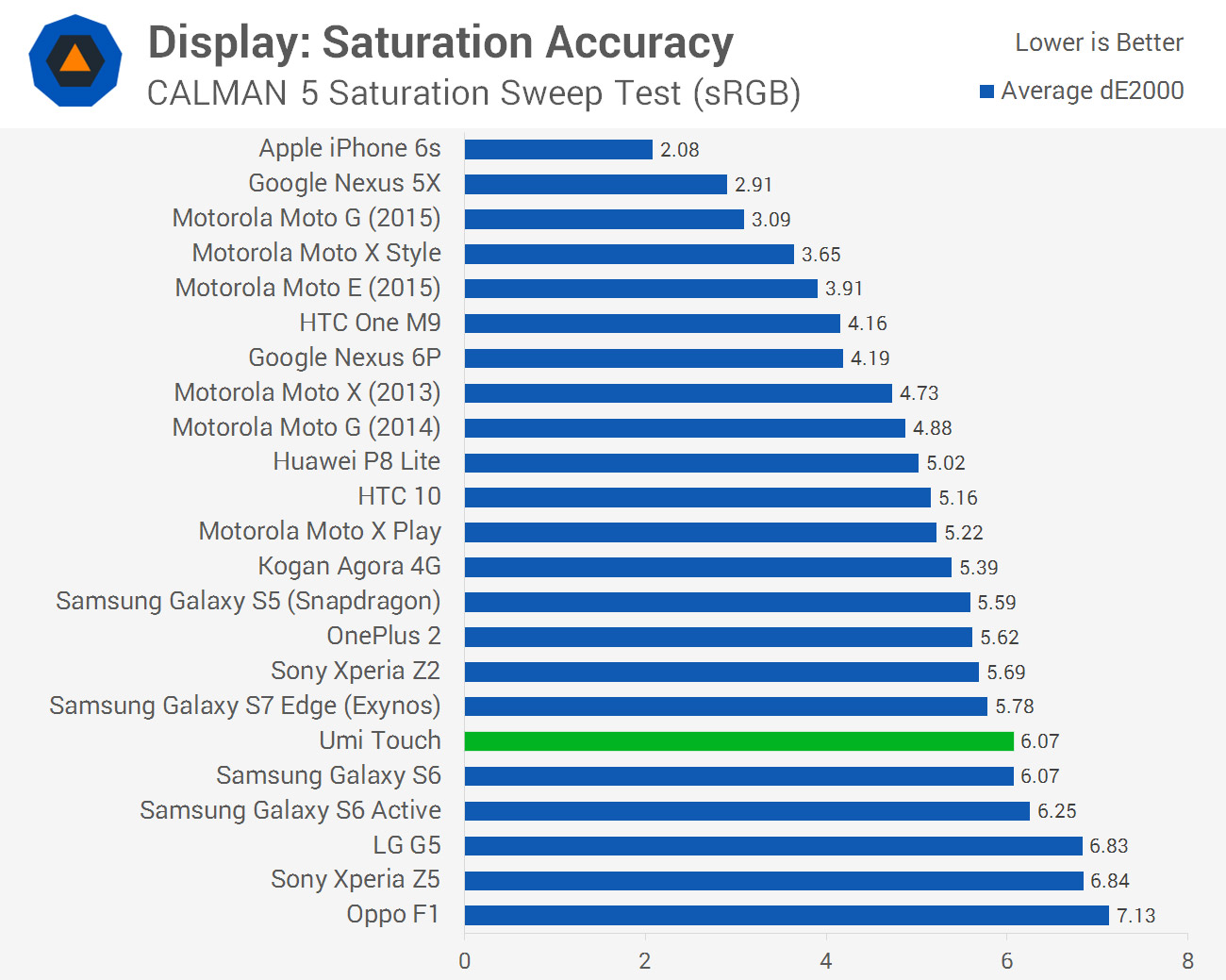
I wasn't as impressed with the Umi Touch's color performance. For some reason, Umi has targeted the ancient NTSC color standard here, rather than sRGB, which is the only color profile that Android supports. And you're not even getting the full NTSC color space, with Umi claiming 95% coverage here.
Across the board, the Umi Touch's display is inaccurate even for budget handset standards. The display is far too cool, and poor accuracy makes some images look very unnatural when viewing them on this display. You do get decent saturation which can make images 'pop', but not in the same way as a Samsung Galaxy device: images are oversaturated and just don't look quite right, particularly when a scene is dominated by grays.
The Touch does come with a "MiraVision" display tuning engine, but literally no settings I adjusted actually improved the color performance. Trying to make the screen warmer and closer to the correct 6504K value significantly affected colors and made the display look absolutely terrible. It's clear that Umi needed to place a much greater focus on color accuracy and they need to target sRGB over NTSC.
I also experienced some issues with the Umi Touch's touchscreen failing to respond adequately to taps, swipes and gestures. Most of the time the touchscreen is fine, but on occasion it completely fails to register a tap, or responds very slowly to a gesture. This could be a performance issue (more on that later), though I suspect there are some underlying issues with the touchscreen as well.
With that said, Umi has been addressing some of these issues since I first received the unit more than a month ago, and the touchscreen performance has improved greatly. However, it's unfortunately still an issue that affects the usability of this device.
